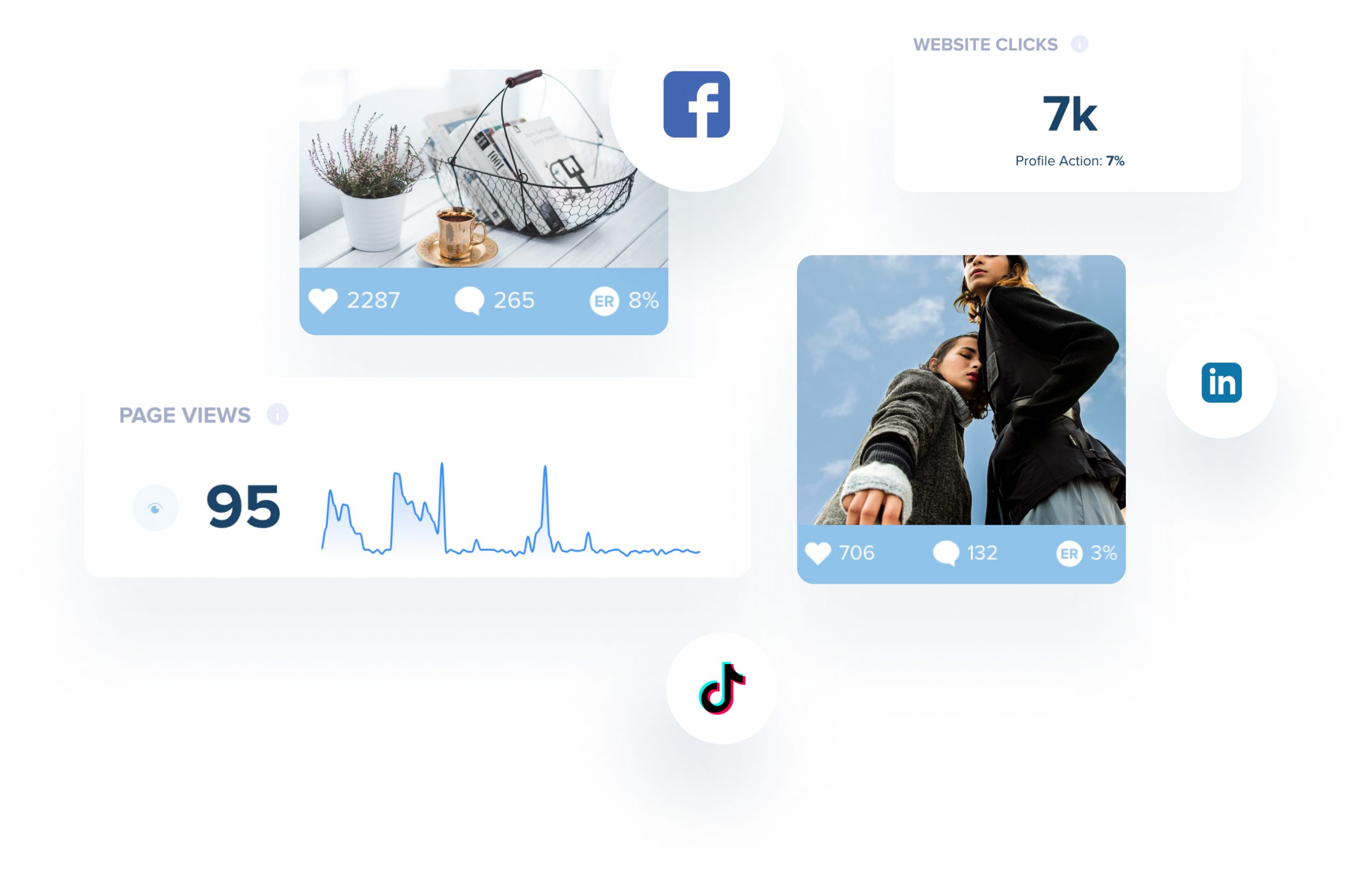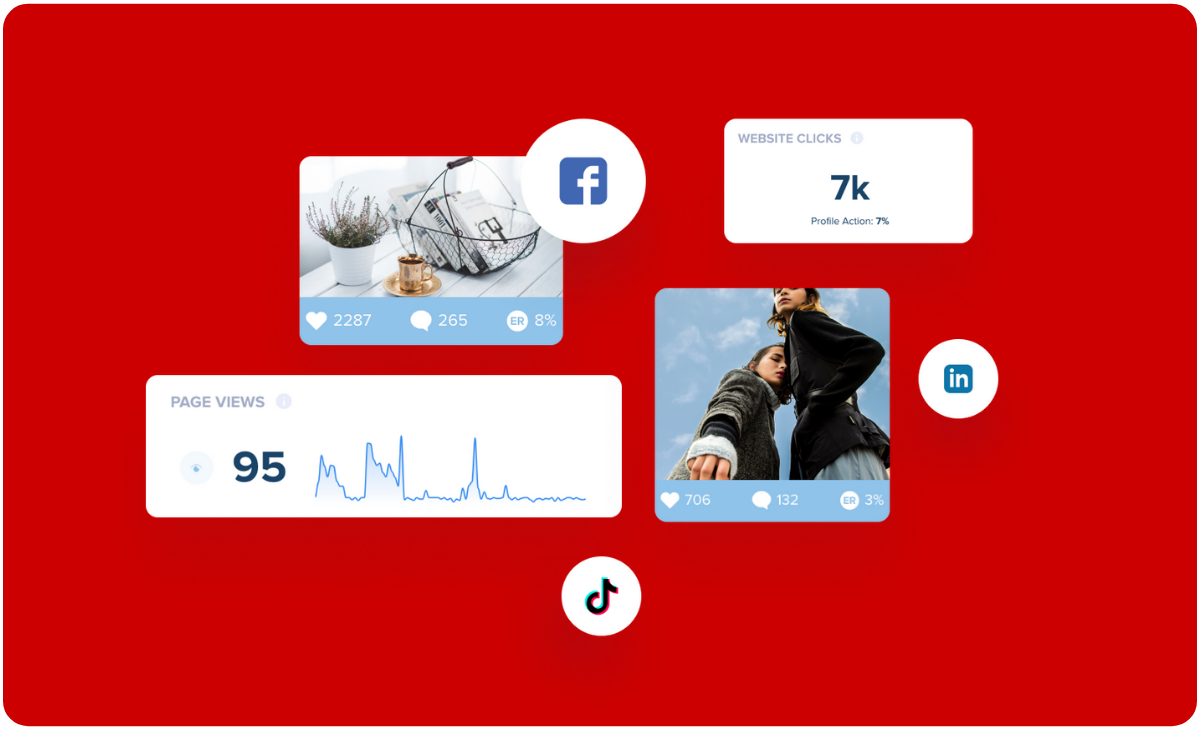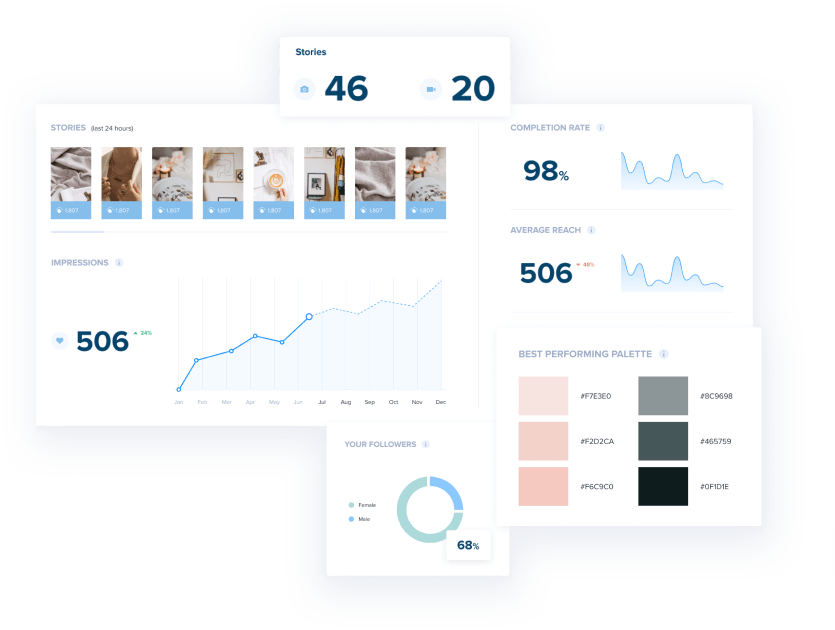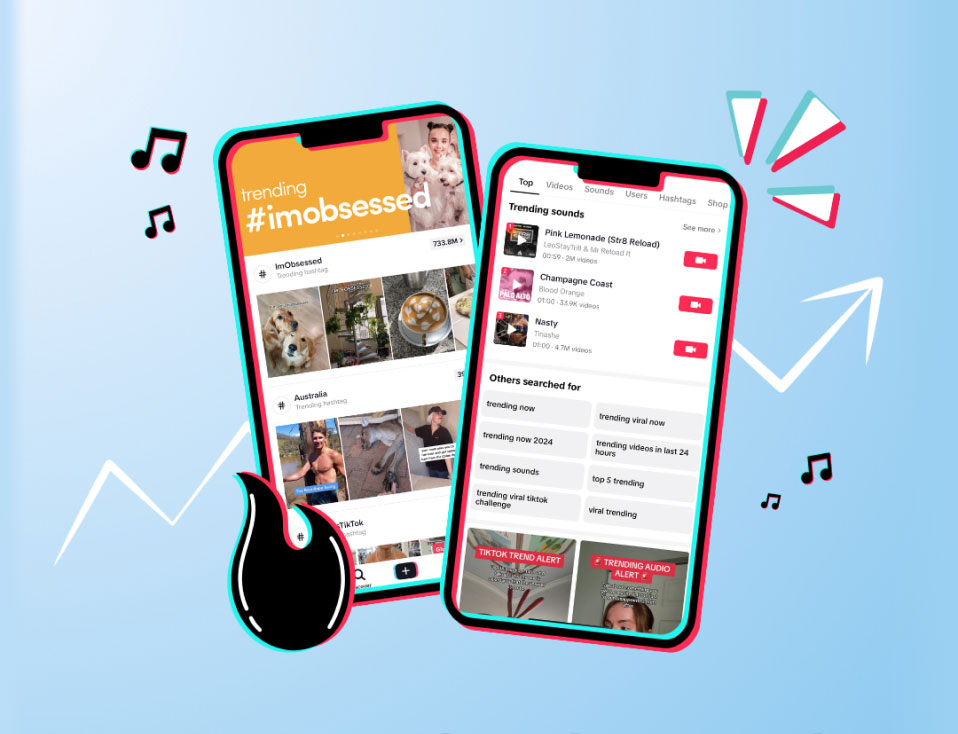When you hear the term ‘audit’, your mind might immediately conjure images of spreadsheets and finances. But it’s not confined to the world of accounting alone.
The truth is that conducting an audit of your social media channels is key to setting your brand or business up for success, now and in the future.
By reviewing what posts are the highest performing and the tactics that work best across your channels, you’ll be able to make informed decisions for your upcoming marketing campaigns and organic social plans.
Don’t let visions of number-crunching hold you back from conducting a social media audit. If you’re looking to review your social media channels proactively, this guide covers everything you need to know about how best to conduct a social media audit and top tips to implement your findings. Let’s dive in!
What is a social media audit?
A social media audit refers to the series of steps that allow you to evaluate your brand’s online presence and measure performance across various social media platforms.
By compiling and reviewing data across your different social platforms, you’ll be able to assess the success of the social strategies you’re currently using.
Using performance metrics like engagement, reach, impressions and click-through rates, you’ll be able to get a clear picture of what’s working on social media and what isn’t. This can then be used to guide your social media strategy.
Why you need to conduct a social media audit
A social media audit is essential to ensure your brand’s online presence and social strategies are driving you closer to your KPIs, goals and objectives.
Strong campaign imagery might look beautiful across your Instagram grid, but if user-generated content or Reels are what drives results, you need to ensure you’re making strategic decisions about what content formats are going to help you hit your goals.
Still not convinced? Here are three reasons why you need to conduct a social media audit, stat!
• It allows you to make data-driven decisions in your social media marketing: data will effectively shed light on key performance indicators, giving you a better understanding of the purpose of each channel and how it adds value to your business.
• It allows you to understand the return on investment (ROI) of social media marketing on your business: generate clear reports that give you the data you need to prove the effectiveness of your social media marketing on your business’s bottom line.
• It offers inspiration and new ideas for an upcoming social plan: with data showing you what works well and what doesn’t, you’ll be better placed to identify new opportunities for your brand to adapt and appeal to audiences.
Your step-by-step social media audit guide
With the ability to shed light on how you manage your social media presence and the best strategies to optimize success, a social media audit is something every small business owner or content creator should be doing. The best bit? It’s easier than you think, too!
Follow these steps to ensure you conduct a successful social media audit:
1. Write a list of all your social media channels and platforms
Before getting into your analytics, you first need to take stock of all your social media channels. From Facebook to Instagram, LinkedIn to YouTube, Twitter and TikTok, be sure to write down the names of all of your social media channels or platforms, along with their handles and links to each profile.
An audit doesn’t need to include every channel, though. If you’re particularly interested in seeing how your marketing strategies are being received across Instagram and Facebook, your audit can focus specifically on these channels.
2. Define your goals for each platform
With each social media platform serving a specific purpose, it’s important to spend time defining the goals for each and how you might achieve them. If your brand only recently started a TikTok account, perhaps you want to increase audience engagement and following.
Or maybe you have a strong Instagram following and want to figure out which content themes and formats are delivering the best results for your brand.
Regardless of what your goal might be, be clear on what it is you want to focus on, how you’ll measure results, and the intended outcome you want to achieve.
3. Review your branding and tone of voice
When it comes to branding and tone of voice, you want to ensure it’s consistent across all of your social media platforms.
First, ensure your profiles are complete on every channel, with each using the same profile image or logo. Ensure your contact information is up to date, your bios are optimized with searchable keywords and you have a link in bio landing page set up to drive traffic to your most important links.
Though you certainly want to ensure there is a consistent tone across your platforms, it’s also fair to say that each channel has a different feel. For instance, LinkedIn tends to skew towards formality, whereas Twitter and Instagram can be more laidback.
As for your brand identity, take stock of your visual content across each platform and consider:
• Are your brand fonts and colors applied consistently?
• Are you leveraging branded templates to build recognition of your brand?
• Are you using bespoke, original imagery and video content to give your content a bespoke look and feel?
• Are you harnessing Instagram Stories Highlights covers and Reels covers?

Want a hand auditing your branding on social media? Plann’s Analytics feature is great for this, as it identifies top color swatches and brand palettes, allowing you to track the impact of applying your branding consistently on social media.
4. Pinpoint top-performing and lowest-performing posts on each channel
Across your social platforms, it’s important to identify top-performing and lowest-performing posts to understand what works best and what isn’t serving your business at all.
With Plann’s Analytics feature, you’ll be able to view the engagement rate for every single post to see what your audience loves and discover what posts were top performers across the month or set timeframe.

Once you’ve identified your top and lowest performing content, look at your account more broadly to identify performance trends such as:
• What content format (video, static, carousels, stories) is generating the most engagement?
• How many users are you reaching each month? How does this differ across platforms?
• How many profile visits and external link taps do you generate each month?
Hot tip: make sure to filter by what metrics matter to you! For instance, if you’re looking to inspire organic conversations on Instagram, make sure to filter by comments and direct messages. Alternatively, if boosting website traffic is important, metrics like profile visits or link in bio clicks should be your main focus.
5. Review your audience analytics on each platform
While your follower count can be a vanity metric and isn’t guaranteed to correlate to a boost in sales, understanding your audience on social media is key to success.
Rather than looking at the number of new followers you gain each month, use your social media audit to dive into:
• The demographics of your audience: where are they located? What age range do they fall into?
• Their activity and behaviors: what days and times are they most active?
By tracking these metrics you can gain a more accurate picture of who is following your brand on social media and whether this is aligned with your ideal target audience.
6. Consolidate your findings into a report with clear insights, learnings, and recommendations
With the findings from your social media audit, you’ll be better placed to create an effective social media strategy in which you implement these findings. It’s worthwhile making a report that clearly summarizes what data you’ve collected during your audit.
Our tip? Make sure to go beyond stats and numbers and ensure you interpret these results. This could look like:
• Comparing what is working well vs what isn’t working well across platforms
• Summarizing your key findings platform by platform
• Identifying trends in your best performing posts and why these are working
• Establishing a clear set of next steps to inform your content strategy moving forward
This can serve as a useful guide for your social media team and be referred to during content ideation, ensuring you keep things fresh and target your audience to ensure your energy is invested in the right place for optimal growth and engagement.
Top tips for social media audit success: How to implement your findings
Now it’s time for the best bit: let’s put your social media audit results into action!
To make the most of your social media audit, follow these top tips on how to implement your findings:
• Set new goals for each platform: once you’ve taken stock of all your profiles and know what works best for your audience, it’s time to set new goals for each platform. Be specific and set benchmarks, KPIs and timeframes for every goal you set (measurability is key!).
• Prioritize high-performing content formats, and ditch low-performing content formats: your social media audit will shed light on engagement, reach, and top-performing content. To ensure you focus your energy only on what serves your business, ditch low-performing content formats and focus on those that are working well.
• Book in your next audit: a social media audit isn’t a one-time job. Consider it a pulse-check on your social media presence; you should do it frequently to ensure you’re staying relevant to the latest trends and serving your audience with content suited to your demographic. Whether it’s on an annual or bi-annual basis, a social media audit should be done regularly as you keep track of your performance over time.
How to level up your social media content
Don’t let the term ‘audit’ scare you from undertaking a thorough social media audit of your brand. As we’ve highlighted above, obtaining this data is essential for increasing growth, audience engagement, and ensuring your brand drives tangible ROI from your social channels.
Luckily, Plann makes the process seamless by streamlining your data in one handy dashboard. With powerful visualizations, custom metrics and the ability to compare multiple platforms, you’ll be able to spend more time make strategic marketing decisions and less time crunching numbers.
Go on, and redeem your 7-day free trial of Plann Plus. If you don’t like it, keep using Plann for free!









